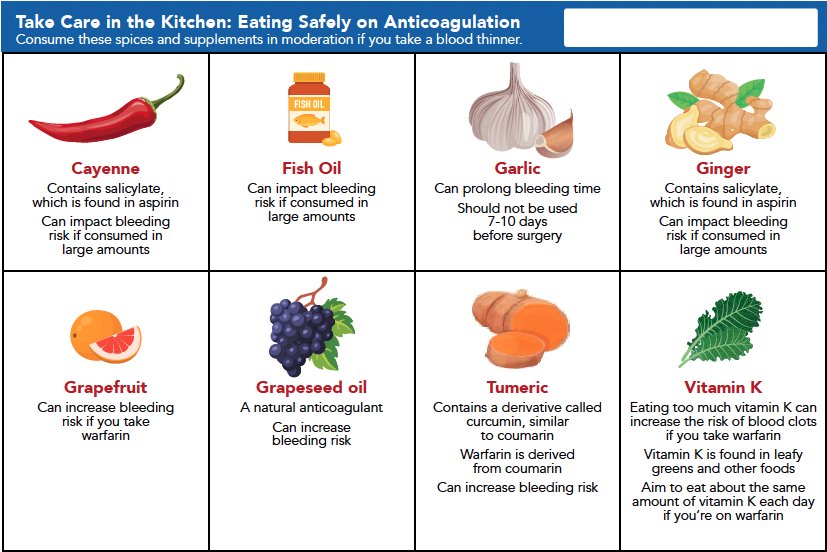Published on
Beyond Blood Thinners: What to Know About Complementary and Alternative Medicine (CAM) and Blood Clots
Table of Contents
After having a blood clot, some patients turn to complementary and alternative medicine, or CAM, to help with their recovery.
Complementary medicine refers to using holistic techniques, like yoga or tai chi, alongside standard medical treatment, while alternative medicine is used instead of standard treatment.
So what do we know about CAM after a blood clot? And which methods have been shown to be safe and effective in the research?
Meditation
Stress has been found to increase the risk of blood clots, particularly in people who are already at a higher clot risk – which includes people who have already had a blood a clot. If you’ve had a clot, learning stress management techniques may help reduce your risk of having another one.
For some people, meditation can be helpful in managing stress. Some studies have shown a lower clot risk in people who regularly practice meditation. The research has not been consistent, and the effect seems to be bigger for arterial clots (heart attacks and stroke) than for venous clots (clots in the deep veins). Still, meditation is a very low-risk activity, so there’s no reason not to try it if you feel that it might be helpful for you. There are various types of meditation available, including silent meditation, chanting, and even breathwork (which uses alterations of breath patterns to induce a meditative state).
Yoga and Tai Chi
Yoga and tai chi are sometimes referred to as “moving meditation.” These forms of movement include a component of mindfulness (“being in the moment”) and help release stress, which can have the same benefits as other types of meditation.
In addition, these techniques have the added benefit of physical movement. Lack of movement is one of the strongest risk factors for having a blood clot, so additional movement could help to prevent another clot. Although there is little evidence that yoga or tai chi can reduce the risk of blood clots in general, these gentle forms of movement are typically very safe for people who are recovering from a blood clot.
Acupuncture
Acupuncture is a traditional Chinese medicine technique, which involves inserting extremely tiny needles into the skin at specific points on the body. The goal is to alter the flow of energy in the body.
Currently, there is very little research investigating the effect of acupuncture on the risk of blood clots. One study did show that regular use of acupuncture led to a lower risk of stroke in people at higher risk (for stroke), but more research is needed to determine whether acupuncture is effective at preventing clots.
There are studies indicating that acupuncture is safe for people who are taking blood thinners, as long as the appropriate needle size and depth are used. If you do choose to try acupuncture, make sure to choose a licensed and experienced practitioner – and always check with your anticoagulant prescriber first.
Chiropractic Manipulation
Chiropractic manipulation generally involves quick movement of a segment of the spine. Because its practitioners have a doctoral-level degree, some people don’t consider chiropractic care to be CAM, but rather a form of mainstream medical treatment. However, the National Center for Complementary and Integrative Health does classify chiropractic manipulation as a form of CAM.
Overall, there’s little research on blood clots and chiropractic manipulation. Some studies show that manipulation may help treat high blood pressure (which is a risk factor for clots), but other study findings have been contradictory. At this time, we simply don’t have enough research to know whether chiropractic manipulation can help prevent clots, so it’s best to avoid chiropractic manipulation of any area where you actively have a clot. For example, if you have a clot in a vein near the hip, then lower back manipulation may be unsafe, as it could break off a piece of the clot. There is also a small risk of chiropractic manipulation causing damage to an artery in the neck, leading to a blood clot that can cause a stroke. However, this is extremely rare.
*Looking for information about massage? See our Holiday Helpline!
Herbs and Supplements
There are some herbs and supplements that can affect both clotting and bleeding, including garlic, ginkgo biloba, and curcumin (a compound found in turmeric), as well as omega-3 fatty acids (found in fish oil). These supplements, and others (see chart below), can interact with blood thinners as well, either by making them too effective (increasing your risk of bleeding), or by preventing them from working effectively (putting you at risk for a clot).

Common Blood Thinner Interactions with Drugs and Supplements
- Aspirin can increase the risk of bleeding and should be avoided. Instead use a pain reliever such as acetaminophen (like Tylenol®), unless otherwise directed by your doctor.
- Cannabis or CBD products can increase the risk of bleeding.
- Ginkgo biloba can increase the risk of bleeding.
- Nonsteroidal anti-inflammatory drugs (NSAIDs): NSAIDs, such as ibuprofen (Advil®) or naproxen (Aleve®), can raise the risk of bleeding, especially in the stomach. As with aspirin, NSAIDs should be avoided if you take a blood thinner.
- St. John’s Wort: Large amounts can decrease the effectiveness of warfarin and increase the risk of bleeding. Vitamin E, when taken in large doses, can increase bleeding risk.
Always tell your anticoagulant prescriber about ALL of the medications, herbs, and supplements that you use.
CAM and Blood Clots: The Bottom Line
We need a lot more research on most forms of CAM to know if they can help reduce the risk of clots. There’s some evidence that meditation, yoga, and tai chi could be beneficial. Some herbs and supplements also appear to reduce clotting, but these can be dangerous when used alongside blood thinners.
If you’re considering using any CAM technique, you should always speak with your medical team first to ensure that you’re making a shared—and informed—decision.
*Originally published in The Beat — December 2023. Read the full newsletter here.



